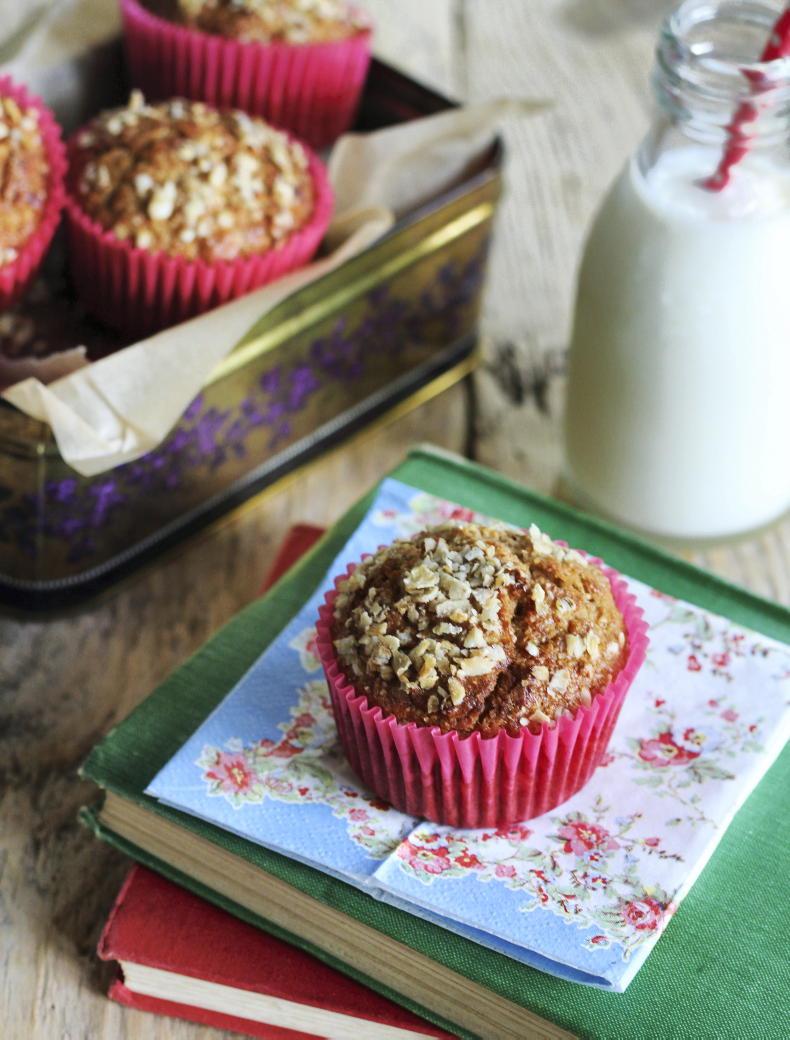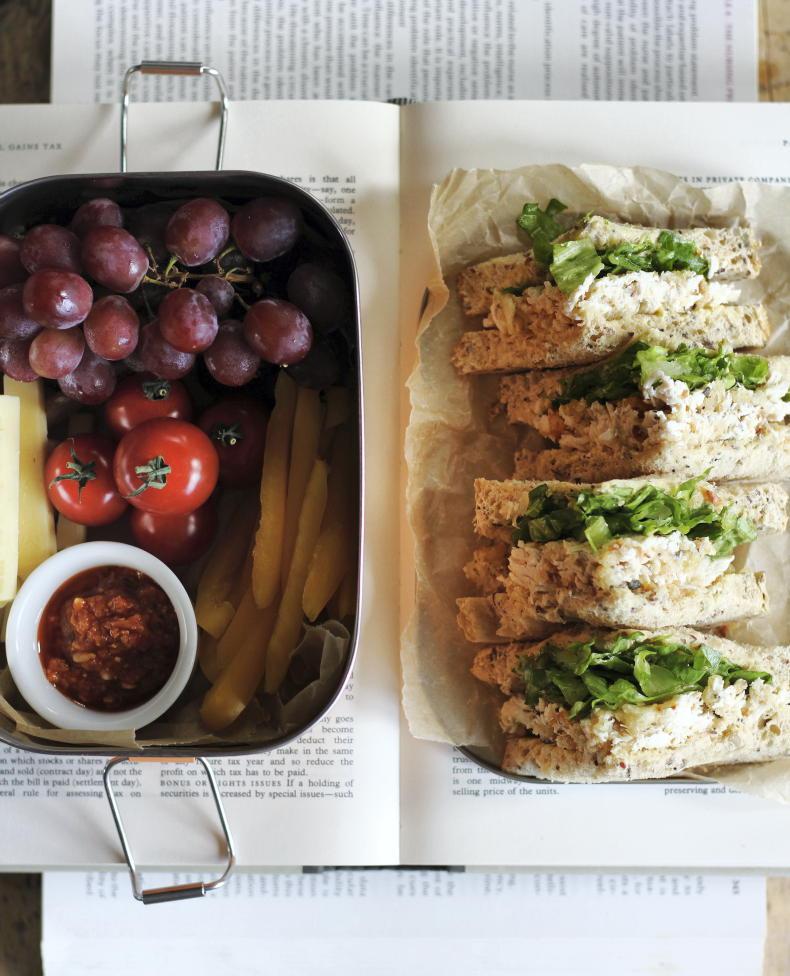With schools about to open their doors once again, students countrywide are preparing themselves for the massive change of routine, which hits like a boulder each September.
Earlier bedtimes, less free time, and fewer snack times can come as a shock to the system, but each year, once a few weeks in, routine is normally restored and business as usual can resume. Often, what can be the hardest to come to terms with - especially for the younger student - is the shift from the gazillion snack breaks they’ve become accustomed to over the summer holidays to the two allocated times to eat between the hours of nine and three. Including wholesome, nutrient-rich foods in the lunchbox, which promote a better feeling of fullness, may help to ease this transition.
The main benefit of a nutritious lunch is to provide sufficient energy for the child to navigate their way through the school day, while avoiding energy slumps that will disrupt their ability to learn and play. Nutrient-rich lunchbox fillers play an important role in fuelling a child physically, mentally, and even emotionally throughout their day.
Ideally the contents of a lunchbox should be balanced; including some sort of fruit or vegetable, fibre-rich carbohydrates, a dairy item, and a source of lean protein. However, it is most important to include any nutrient-rich foods that the child enjoys eating. Even a few bites of any nutrient-dense foods will help to provide your little once with a stable energy boost. A few small swaps, such as replacing white bread for a wholemeal or wholegrain alternative, can add a little extra fibre and nutrients to the lunchbox. Likewise, if your child enjoys eating pasta as a salad, try the whole wheat variety along with some finely chopped vegetables and a good quality pesto to bind it all together.
Most children rush their lunch to make the most of their playtime at break, so including small portable foods to give them the option to fuel up on something nutritious while on-the-go. A banana, homemade granola bars, wholesome muffins or cheese-filled rice cake can all be eaten with ease while busily making their way to the yard.
It is best to avoid sugary or fat-laden foods as a lunchtime snack, as even though they may give an initial energy boost, ultimately this will be followed by a slump, leading to a decrease in energy for the rest of the afternoon.

Banana muffins. \ Nessa Robins
Banana muffins
Children often enjoy helping with the preparation of their lunches. These banana muffins are ideal for a young cook to make as it’s simply a matter of adding the wet ingredients to the dry ones. A handful of chocolate chips can also be added to the mixture, once they’re something the school allows. Otherwise they’re still delicious plain.
225g wholemeal flour1tsp baking powder1tsp cinnamon2 ripe bananas, mashed2 eggs75ml coconut oil75ml maple syrup50ml milk1 tsp vanilla extract1 tbsp oats1 Pre-heat the oven to 190°C/fan 170°C/gas mark 5. Line a muffin tin with 10 paper cases.
2 Place the flour into a large bowl, sieve in the baking powder and cinnamon.
3Mash the bananas and add to a jug with the eggs, coconut oil, maple syrup, milk and vanilla extract. Add to the bowl with the dry ingredients and using a wooden spoon, stir well to combine.
4 Divide the batter evenly between the muffin cases. Top each one with a sprinkling of oats.
5 Bake in the preheated oven for 30 to 35 minutes. Remove from the oven and transfer to cool on a wire tray. The muffins will keep for up to three days in an air-tight container.

Chicken and stuffing sandwich filler. \ Nessa Robins
Chicken and stuffing sandwich filler
These sandwiches can of course be made with leftover roast chicken and stuffing from the Sunday dinner, but they really are so delicious they’re worth the effort of making everything from scratch, especially for the pleasure of having sandwiches for lunch.
50g butter1 onion, approx. 100gBlack pepper6 sage leaves, finely chopped150g breadcrumbs2 chicken breasts1 bay leaf 4 tbsp mayonnaise of choiceTo serve:
Lettuce, finely choppedBread, wrap or roll of choice
1 Pre-heat the oven to 190°C/fan 170°C/gas mark 5.
2 Finely dice the onion in a food processor or with a knife.
3 Add the butter to a small saucepan and place over a low heat. Once the butter starts to melt, add the finely diced onion. Add a few grinds of black pepper and leave to cook for about 10 minutes, stirring regularly.
4 Turn the heat off under the saucepan and add the finely chopped sage leaves and breadcrumbs. Stir well to combine and place in a medium-sized oven-proof dish.
5 Cook in the oven for about 20 minutes, stirring once or twice to ensure all the stuffing is cooked and crispy. Take from the oven and tip into a large bowl to cool.
6 While the stuffing is cooking, in a separate saucepan, add the chicken breasts, bay leaf and a few grinds of black pepper. Top with boiling water, and bring back to the boil, then simmer gently for about 30 minutes.
7 When the chicken is cooked, carefully take it from the saucepan using a slotted spoon and place on a plate. Using two forks, shred the chicken into pieces. Allow to cool, before adding to the bowl with the cooled stuffing. Add the mayonnaise and stir well to combine.
8 Use straightaway or place in a sealed container and refrigerate for up to two days.
Read more
Home Nurse: Nessa Robins’ brain fuel for exam season
Nessa Robins' fibre rich recipes
With schools about to open their doors once again, students countrywide are preparing themselves for the massive change of routine, which hits like a boulder each September.
Earlier bedtimes, less free time, and fewer snack times can come as a shock to the system, but each year, once a few weeks in, routine is normally restored and business as usual can resume. Often, what can be the hardest to come to terms with - especially for the younger student - is the shift from the gazillion snack breaks they’ve become accustomed to over the summer holidays to the two allocated times to eat between the hours of nine and three. Including wholesome, nutrient-rich foods in the lunchbox, which promote a better feeling of fullness, may help to ease this transition.
The main benefit of a nutritious lunch is to provide sufficient energy for the child to navigate their way through the school day, while avoiding energy slumps that will disrupt their ability to learn and play. Nutrient-rich lunchbox fillers play an important role in fuelling a child physically, mentally, and even emotionally throughout their day.
Ideally the contents of a lunchbox should be balanced; including some sort of fruit or vegetable, fibre-rich carbohydrates, a dairy item, and a source of lean protein. However, it is most important to include any nutrient-rich foods that the child enjoys eating. Even a few bites of any nutrient-dense foods will help to provide your little once with a stable energy boost. A few small swaps, such as replacing white bread for a wholemeal or wholegrain alternative, can add a little extra fibre and nutrients to the lunchbox. Likewise, if your child enjoys eating pasta as a salad, try the whole wheat variety along with some finely chopped vegetables and a good quality pesto to bind it all together.
Most children rush their lunch to make the most of their playtime at break, so including small portable foods to give them the option to fuel up on something nutritious while on-the-go. A banana, homemade granola bars, wholesome muffins or cheese-filled rice cake can all be eaten with ease while busily making their way to the yard.
It is best to avoid sugary or fat-laden foods as a lunchtime snack, as even though they may give an initial energy boost, ultimately this will be followed by a slump, leading to a decrease in energy for the rest of the afternoon.

Banana muffins. \ Nessa Robins
Banana muffins
Children often enjoy helping with the preparation of their lunches. These banana muffins are ideal for a young cook to make as it’s simply a matter of adding the wet ingredients to the dry ones. A handful of chocolate chips can also be added to the mixture, once they’re something the school allows. Otherwise they’re still delicious plain.
225g wholemeal flour1tsp baking powder1tsp cinnamon2 ripe bananas, mashed2 eggs75ml coconut oil75ml maple syrup50ml milk1 tsp vanilla extract1 tbsp oats1 Pre-heat the oven to 190°C/fan 170°C/gas mark 5. Line a muffin tin with 10 paper cases.
2 Place the flour into a large bowl, sieve in the baking powder and cinnamon.
3Mash the bananas and add to a jug with the eggs, coconut oil, maple syrup, milk and vanilla extract. Add to the bowl with the dry ingredients and using a wooden spoon, stir well to combine.
4 Divide the batter evenly between the muffin cases. Top each one with a sprinkling of oats.
5 Bake in the preheated oven for 30 to 35 minutes. Remove from the oven and transfer to cool on a wire tray. The muffins will keep for up to three days in an air-tight container.

Chicken and stuffing sandwich filler. \ Nessa Robins
Chicken and stuffing sandwich filler
These sandwiches can of course be made with leftover roast chicken and stuffing from the Sunday dinner, but they really are so delicious they’re worth the effort of making everything from scratch, especially for the pleasure of having sandwiches for lunch.
50g butter1 onion, approx. 100gBlack pepper6 sage leaves, finely chopped150g breadcrumbs2 chicken breasts1 bay leaf 4 tbsp mayonnaise of choiceTo serve:
Lettuce, finely choppedBread, wrap or roll of choice
1 Pre-heat the oven to 190°C/fan 170°C/gas mark 5.
2 Finely dice the onion in a food processor or with a knife.
3 Add the butter to a small saucepan and place over a low heat. Once the butter starts to melt, add the finely diced onion. Add a few grinds of black pepper and leave to cook for about 10 minutes, stirring regularly.
4 Turn the heat off under the saucepan and add the finely chopped sage leaves and breadcrumbs. Stir well to combine and place in a medium-sized oven-proof dish.
5 Cook in the oven for about 20 minutes, stirring once or twice to ensure all the stuffing is cooked and crispy. Take from the oven and tip into a large bowl to cool.
6 While the stuffing is cooking, in a separate saucepan, add the chicken breasts, bay leaf and a few grinds of black pepper. Top with boiling water, and bring back to the boil, then simmer gently for about 30 minutes.
7 When the chicken is cooked, carefully take it from the saucepan using a slotted spoon and place on a plate. Using two forks, shred the chicken into pieces. Allow to cool, before adding to the bowl with the cooled stuffing. Add the mayonnaise and stir well to combine.
8 Use straightaway or place in a sealed container and refrigerate for up to two days.
Read more
Home Nurse: Nessa Robins’ brain fuel for exam season
Nessa Robins' fibre rich recipes








 This is a subscriber-only article
This is a subscriber-only article










SHARING OPTIONS: